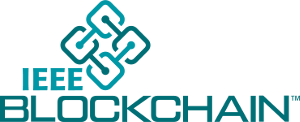IEEE Blockchain Technical Briefs
A collection of short technical articles
Welcome to IEEE Blockchain Technical Briefs 2024 Edition!
Message from Dr. Justin Y. Shi, 2024 Editor in Chief
Transaction record histories are mission critical. Transaction processors are the timeless essentials of all cyber infrastructures for mission critical applications. Traditional transaction processors are vulnerable to hacks, natural and malicious attacks. Since 2008, blockchain technology emerged as a new type of distributed ledger technology (DLT). It has demonstrated unprecedented service reliability and tamper resistance that outshined legacy transaction processing methods and centralized trust management systems. At IEEE BCTB2023, we have received many blockchain technology inspired application proposals from the community. Thank you!
Please send potential IEEE Tech Brief articles to: justinshi@ieee.org
DLT and Blockchain Technology Outlook
By Justin Y. Shi, PhD, Associate Professor of CIS Department, College of Science and Technology, Temple University, USA; Boleslaw Szymanski, PhD, Claire and Roland Schmitt Distinguished Professor of Computer Science, Rensselaer Polytechnic Institute, USA; Lakshmi Shankar Ramachandran, PhD, Assistant Professor of Banking and Finance, Case Western Reserve University, USA;Imran Bashir, Author and Researcher, J.P. Morgan, UK; Nicolae Goga, PhD, Professor, University Politehnica of Bucharest, Romania; Constantin Viorel Marian, PhD, Associate Professor, National University of Science and Technology Politehnica, Romania
From a software architecture perspective, the starkest contrast of blockchain-based DLT methods compared to traditional transaction processing is the complete program and data decoupling from physical hardware components, such as networks, processors, and storage devices. Therefore, the blockchain service has no single-point failures. Storing the distributed ledgers in cryptographic proof chains afforded a level of security that is more reliable and less expensive than human-powered trust management systems. However, it is still not clear if all applications should be decentralized. For long term sustainability, the ledger immutability and scalable performance continued to be non-trivial challenges.
Trusted Registry of Correlation Patterns and Next Best Action for Networks
By Rakesh Girija Ramesan Nair, Senior Technology Architect, Infosys, Netherlands
The paper is envisaged to explain how we can leverage blockchain based technology to create a trusted registry of frequently observed correlation patterns and their next best action across network domains. One of the key challenges across Telecom service providers is the network operations area with multi-vendor multi-cloud kind of scenarios across domains like core, access and mobile. Service Providers across the globe have been looking at AIOPs tools/modules for proactively identifying the issues, patterns and the best action that need to be performed for correcting the same. Identifying the next best action is difficult as the type of network, vendor involvement will vary across various service providers. This article covers the possibilities to be explored with blockchain, the challenges it poses and how it can help telcos across the globe.
2024 IEEE Blockchain Technical Briefs Editorial Board

Justin Shi
Editor-in-Chief
Subscribe to the IEEE Blockchain Technical Briefs
Join our Blockchain Technical Community and receive our Technical Briefs by email.
IEEE Blockchain Technical Briefs Editorial Board
Gora Datta, FHL7, SMIEEE, SMACM, Managing Editor
2024 Editorial Team
Justin Y. Shi, PhD, Editor-in-Chief
Boleslaw K. Szymanski, PhD
R.L. Shankar, PhD
Imran Bashir
Nicolae "Nicu" Goga, PhD
Constantin “Viorel” Marian, PhD
View the 2023 IEEE Blockchain Technical Briefs Editorial Board
View the 2022 IEEE Blockchain Technical Briefs Editorial Board
View the 2018-2020 IEEE Blockchain Technical Briefs Editorial Board
Past Issues
Read the top five most popular IEEE Blockchain Technical Briefs articles.
Read more (PDF, 731 KB)








 Constantin "Viorel" Marian
Constantin "Viorel" Marian